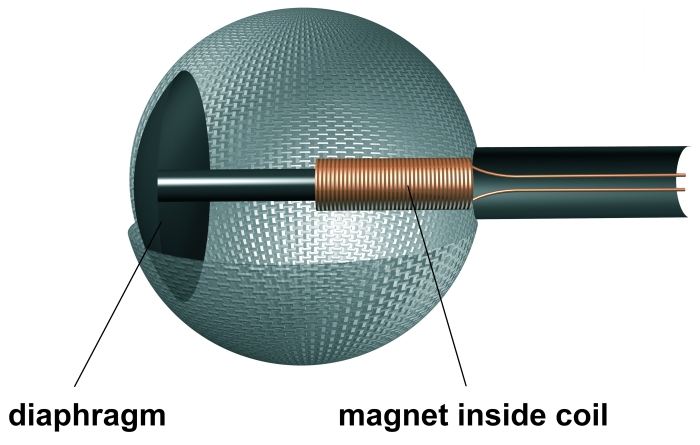Microphones
Microphones amplify a sound. This means increasing the amplitude of a sound wave and making it louder.

How does a microphone work? The diagram below shows what the inside of a microphone looks like.

If we cut into a microphone we would see a piece of plastic at the front end called a diaphragm. This is then connected to a magnet inside a coil of wire.
Essentially, when you speak or sing into the microphone, it will absorb your sound wave. The diaphragm will vibrate forwards and backwards, due to sound being a longitudinal wave. The little magnet inside the coil of wire will start to vibrate too, matching the frequency of the sound wave. It is the movement of this magnet inside the coil of wire that produces a voltage, meaning the microphone converts sound energy into electrical energy. In this way, it is acting like a generator.
Speakers
To then amplify this sound, the microphone needs to be connected to a speaker or an amplifier, otherwise the electrical signal inside the microphone can't do anything. A speaker will convert this electrical energy back into sound energy, giving out a sound wave with a greater amplitude than the original sound.

If you have ever played an electric guitar, it is the same concept. The guitar is full of little magnets inside coils of wire, and plucking the strings creates a little voltage inside the guitar. Once the guitar is connected to an amplifier, it will then emit a sound wave - much louder than the guitar would have sounded had it been unplugged!
Right, let's try some questions now.








